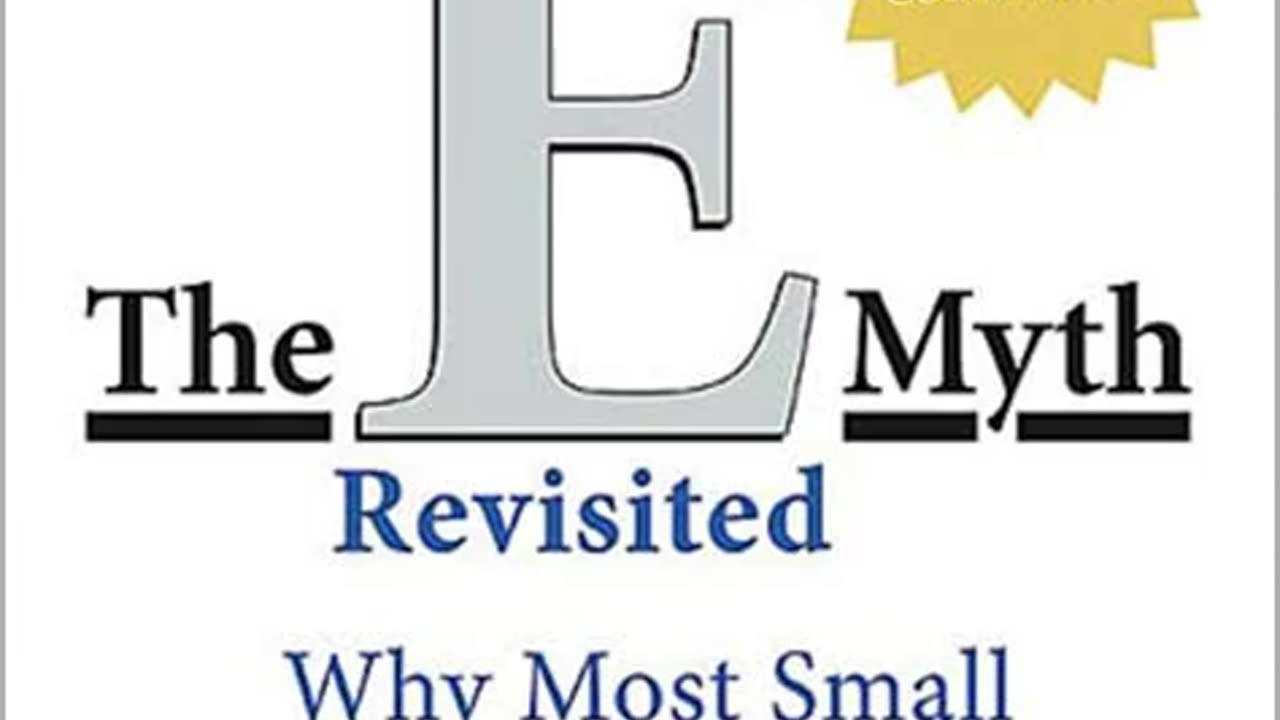Premium Only Content

The E Myth by Michael E. Gerber | Summary
Buy Here: https://amzn.to/4j21uGP
"""The E-Myth Revisited: Why Most Small Businesses Don't Work and What to Do About It"" by Michael E. Gerber is a book that explores the common pitfalls and misconceptions surrounding entrepreneurship and provides insights on building successful and sustainable businesses. Gerber introduces the concept of the ""entrepreneurial myth"" and offers guidance on how to transform small businesses into thriving enterprises. Here's a summary of the key points in the book:
1. The Entrepreneurial Myth: Gerber challenges the notion that being an expert in a particular field automatically translates into business success. He explains the entrepreneurial myth, which is the assumption that technical expertise alone is sufficient for running a business. Gerber argues that many small business owners fail because they neglect the crucial aspects of entrepreneurship.
2. The Three Roles: The book introduces the three roles that every business owner should fulfill – the technician, the manager, and the entrepreneur. Gerber explains that successful businesses require a balance between these roles, with the entrepreneur providing the vision and strategic direction, the manager handling day-to-day operations, and the technician delivering the core product or service.
3. Working on the Business: Gerber emphasizes the importance of working on the business rather than solely working in the business. He urges entrepreneurs to dedicate time to develop systems, processes, and strategies that enable the business to operate smoothly and grow sustainably.
4. The Franchise Model: The book introduces the concept of viewing your business as a franchise prototype, regardless of whether you plan to franchise it or not. Gerber explains how adopting a franchise model mindset helps in developing standardized systems, replicable processes, and clear roles and responsibilities.
5. Building Systems: Gerber highlights the significance of building systems in every aspect of the business, from marketing and sales to operations and customer service. He emphasizes the need for documented processes and procedures that ensure consistency, efficiency, and scalability.
6. Creating the Customer Experience: The book emphasizes the importance of delivering exceptional customer experiences. Gerber encourages entrepreneurs to define their target market, understand their customers' needs and desires, and design systems that consistently deliver high-quality experiences.
7. Working Toward a Strategic Objective: Gerber suggests that businesses should have a clear strategic objective, a long-term vision that guides decision-making and provides a sense of purpose. He explains the importance of setting goals, developing strategies, and aligning actions with the overall strategic direction.
8. Developing the Entrepreneurial Mindset: The book delves into the mindset and qualities of successful entrepreneurs. Gerber explores the characteristics of visionaries, innovators, and leaders and provides insights on developing an entrepreneurial mindset to drive business success.
Throughout the book, Gerber shares real-life examples, case studies, and practical advice to illustrate his concepts and guide readers in transforming their businesses. ""The E-Myth Revisited"" offers a roadmap for small business owners to overcome the common challenges and misconceptions, build scalable and sustainable enterprises, and achieve personal and financial fulfillment.
In summary, ""The E-Myth Revisited"" challenges the entrepreneurial myth and provides guidance on building successful businesses. By balancing the roles of the technician, manager, and entrepreneur, developing systems, creating exceptional customer experiences, and adopting a strategic mindset, entrepreneurs can transform their businesses and achieve long-term success."
-

Akademiks
6 hours agoDrake Finally CUTS off FAKE FRIENDS in the Industry. VIOLATES KHALED, LEBRON! Announces album Feb14
49.1K6 -
 27:28
27:28
Glenn Greenwald
9 hours agoGlenn Reacts to Trump's Gaza Take Over: System Update Special
155K271 -
 2:13:49
2:13:49
Melonie Mac
6 hours agoGo Boom Live Ep 36!
79.4K10 -
 1:02:11
1:02:11
Sarah Westall
6 hours agoFreezing USAID & its Operations in Ukraine: A Massive Money Laundering Organization? w/ Sam Anthony
75.5K11 -
 2:05:35
2:05:35
Space Ice
10 hours agoSpace Ice & Redeye: Neil Breen's Pass Thru
28.3K1 -
 1:00:23
1:00:23
The StoneZONE with Roger Stone
6 hours agoRoger Stone Talks Trump’s Electric First 100 Day Agenda | The StoneZone w/ Roger Stone
33.7K8 -
 DVR
DVR
Redacted News
9 hours agoBREAKING! EPSTEIN LIST INCOMING UNDER AG PAM BONDI? DEMOCRATS FREAKING OUT, PRINCE ANDREW NERVOUS
180K252 -
 52:02
52:02
Candace Show Podcast
11 hours agoBecoming Brigitte: An Inaccessible Past | Ep 2
168K252 -
 2:07:26
2:07:26
2 MIKES LIVE
9 hours ago2 MIKES LIVE #176 News Breakdown Wednesday!
31.3K2 -
 1:39:11
1:39:11
I_Came_With_Fire_Podcast
10 hours agoGAZA TAKEOVER | USAID EXPLAINED | TARIFF TAKEDOWN
50.1K9